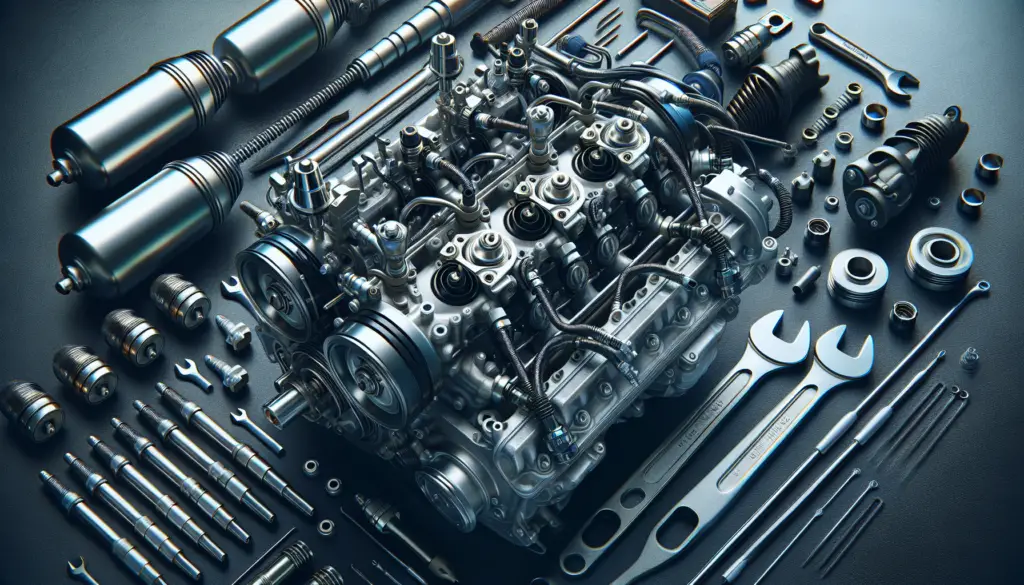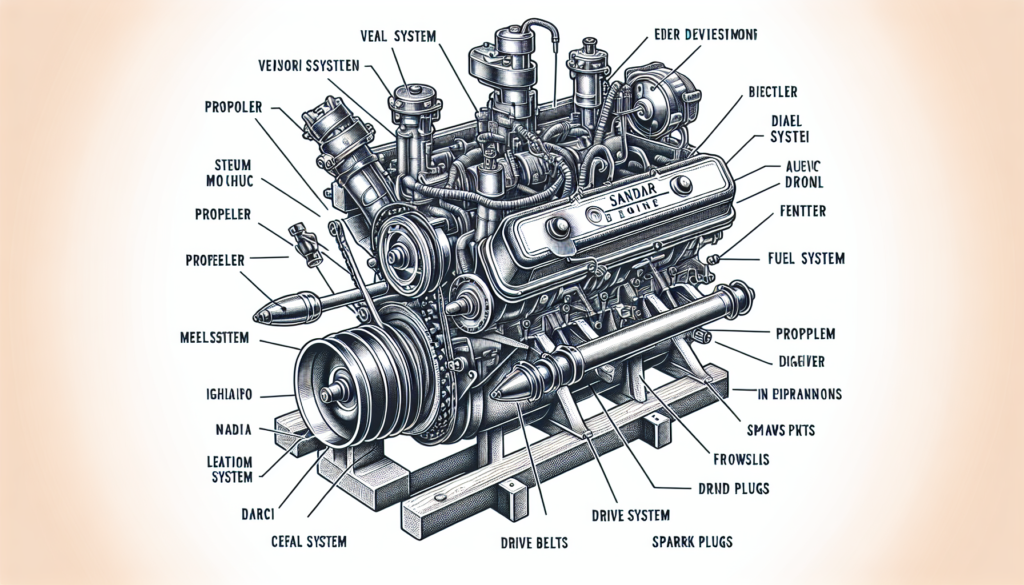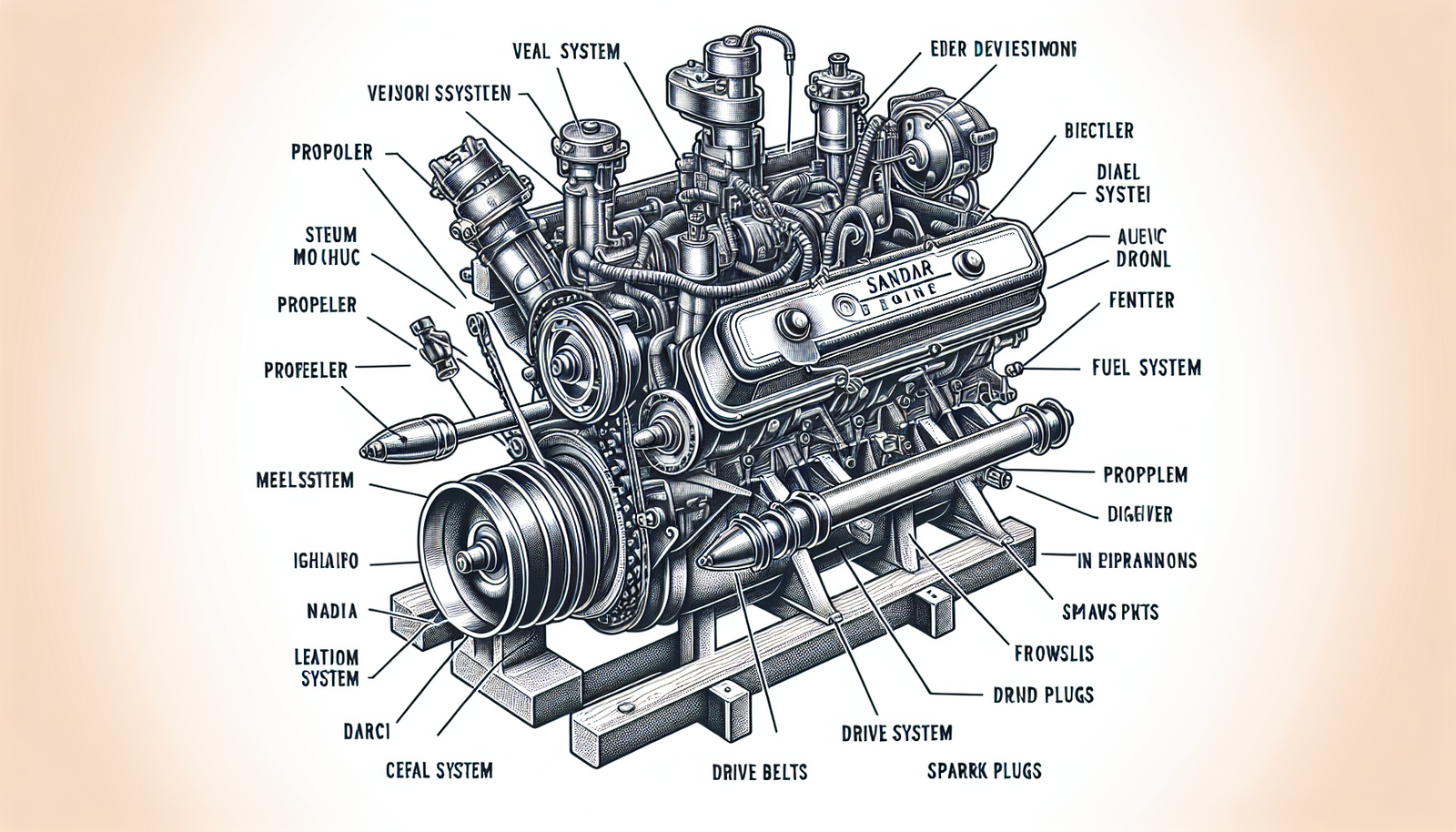Every boat owner knows the importance of regular maintenance to keep their vessel in tip-top shape. Whether you’re setting sail for a leisurely day on the water or embarking on a fishing expedition, the last thing you want is a boat engine failure in the middle of nowhere. No need to lose sleep over such nightmares! Here is a comprehensive guide, “The Top 10 Boat Engine Parts and Components You Should Regularly Inspect,” dedicated to helping you avoid exactly that. This guide highlights the key parts of your boat engine that require frequent inspection and meticulously walks you through the process, ensuring you can conduct these checks independently and with confidence. The journey to stress-free boat trips begins with your diligent inspection regime.

Propellers
When it comes to the overall health of your boat, one of the most vital pieces to regularly check is the propeller. This component is responsible for converting the engine’s power into thrust, allowing your boat to navigate the water smoothly. If anything goes wrong with the propeller, you may find yourself stuck in the middle of a body of water or worse, causing damage to your engine.
Identifying Damage or Debris on Propellers
It is essential to regularly inspect your boat’s propellers for any visible damage or debris. Look out for cracks, bends, chips, or any objects stuck in the propeller. While small injuries or debris might not seem like a big deal, over time they can lead to bigger issues like reducing your engine’s efficiency or even damaging it.
Ensuring Proper Alignment of Propellers
Another thing you must check on your propellers is their alignment. If the propeller is misaligned, your boat won’t operate as smoothly and could experience increased wear and tear over time. If you aren’t sure how to check propeller alignment yourself, consider scheduling an appointment with a professional.
Examining Wear and Tear on Propellers
Aside from looking for visible damage or debris, it’s also important to scrutinize your propellers for signs of wear and tear. Regularly inspect the blades for any pitting, corrosion, or erosion that might impact the propeller’s performance.
Engine Oil
The state of engine oil in your boat can tell you a lot about its overall health. Regularly checking your engine oil ensures the engine operates smoothly and reduces the likelihood of unexpected breakdowns.
Checking Oil Levels Regularly
Make it a habit to check your boat’s engine oil levels. Always ensure the oil is at the right level – not too low and not overfilled. This helps keep your engine lubricated, reducing friction and allowing it to operate more efficiently.
Understanding Signs of Oil Contamination
Regularly monitor your engine oil for signs of contamination, like a milky or frothy appearance, which could indicate a coolant leak, or soot, which could signal incomplete combustion. Addressing these early can prevent more significant – and costly – engine damage.
Scheduling Routine Oil Changes
Scheduled oil changes are an essential part of proper boat maintenance. Old oil can gunk up your engine, reducing its efficiency and potentially causing long-term damage. Regular oil changes keep your engine running smoothly and can extend its lifespan.
Fuel System
Your fuel system is another area that needs your constant attention. It plays a integral role in powering your boat and any issues with it can impact your boat’s efficiency and performance.
Inspecting Fuel Lines and Connections
Regularly inspect your fuel lines and connections for any damage or wear that might cause leaks. Any unwelcome additions to your bilge water like fuel can lead to potential issues, from damaging the boat’s machinery to creating a fire hazard.
Looking for Leaks and Corrosion
Keep a sharp eye out for fuel leaks and signs of corrosion. Leaks can usually be spotted as a fuel smell or sheen on the water around your boat. Corrosion, meanwhile, often looks like rust or oxidation on metal parts – even minor rusting can potentially lead to leaks over time.
Checking Fuel Tanks
Monitoring your fuel tanks for signs of corruption is also necessary. They can suffer from both internal and external dirt accumulation, rusting, or wearing out, especially in saltwater environments. Regular examination and cleaning can help maintain your boat’s fuel efficiency and safety.
Belts and Hoses
Belts and hoses might seem like small, simple parts, but they play a significant role in powering your boat’s vital systems.
Examining Belts for Cracking and Wear
Check your belts regularly for signs of cracking, tears, or undue wear. Any of these signs could indicate that your belt may soon fail, which can cause serious problems for your boat’s operation.
Ensuring Secure Hose Connections
Similarly, hoses should be inspected to make sure they’re securely connected and not showing signs of chafing or wear. Loose connections can cause leaks that might lead to overheating, loss of power, or even a breakdown.
Replacing Old or Damaged Belts and Hoses
Aging or damaged belts and hoses should be replaced as soon as problems are identified. Waiting too long can result in sudden failures that could put your entire boat’s system at risk or strand you on the water.

Cooling System
The cooling system is fundamental to the overall operation of your boat’s engine. This system keeps the engine from overheating – preventing severe damage and ensuring a longer engine life.
Looking for Signs of Overheating
Experience will teach you the normal temperature for your engine. If you notice unusually high readings on your temperature gauge, smell burning, or detect steam, you are likely dealing with an overheating issue.
Making Sure Coolant Levels are Adequate
Maintaining appropriate coolant levels is paramount to the adequate functioning of the cooling system. Regularly check the coolant reservoir and top it off if needed and always ensure that the colour and consistency of the coolant is as it should be.
Inspecting for Leaks in Cooling System
Look for signs of coolant leaks regularly. Puddles or drips of coolant in your bilge area, visible cracks in your heat exchanger, or unexplained dropping coolant levels can indicate a leak that needs immediate attention.
Battery
Your boat’s battery is another vital component that you must maintain
Checking Battery Voltage
Regularly check the battery voltage using a voltmeter or battery monitoring system. Low voltage may indicate a dying battery or an issue with your boat’s charging system.
Ensuring Secure and Corrosion-Free Connections
Inspect the battery terminals regularly, ensuring they are secure and free from corrosion. Clean, tight connections ensure a healthy power flow to your boat’s electrical components.
Testing Battery Strength and Performance
Finally, routinely testing your battery’s strength and performance is critical. Consider using a battery load tester and, if your battery’s performance is consistently weak, it may need to be replaced.

Air Filters
Air filters are instrumental in ensuring your engine is fed with clean air, enhancing sustainability and operational efficiency.
Cleaning or Replacing Dirty Air Filters
Periodically clean or replace your air filters to ensure that your engine gets the flow of fresh, clean air it needs for optimum performance.
Inspecting for Damage or Leaks
Check for visible tears or holes in the air filter, or any other signs of damage, which might let unfiltered air into your engine causing damage to its inner parts.
Understanding the Importance of Proper Air Flow
A clean air filter allows air to move smoothly into your engine, improving performance and fuel efficiency. Neglecting to maintain your air filter can lead to problems like rough idling, lowered horsepower, or black smoke emissions.
Exhaust System
Your boat’s exhaust system is another vital component to maintain. It removes harmful gases and fumes from the engine, contributing to safer operation.
Looking for Discoloration or Corrosion
Check for signs of discoloration or corrosion, which could indicate a leak or issue within the system.
Checking for Leaks or Damage
Regularly inspect the exhaust system for visible leaks, as these can lead to harmful gases being released into your boat. Also, monitor for any physical damage like cracks or warping, which could impact the system’s functionality.
Understanding the Dangers of Carbon Monoxide
A properly functioning exhaust system helps safeguard against carbon monoxide poisoning. It’s important to know the dangers of carbon monoxide, a colorless and odorless gas emitted by boat engines, that can lead to serious health issues or even death.

Transmission
The transmission of your boat plays a large rule in its operational ability. It helps in transferring power from the engine to the propeller shaft, and its health is essential to your boat’s performance.
Checking Transmission Fluid Levels
As part of your routine maintenance, regularly check your boat’s transmission fluid. Low or dirty fluid can affect your boat’s power and speed.
Examining for Leaks or Damage
A look-over the transmission for visible leaks or damage should be a routine maintenance task. Furthermore, monitor for issues like difficulty shifting gears or unusual noises, which could signal a transmission problem.
Understanding the Role of the Transmission in Your Boat’s Performance
A well-maintained transmission ensures smooth gear shifts and efficient transfer of power, greatly influencing your boat’s overall performance. Regular inspections and maintenance can help keep your transmission in top shape and prolong its lifespan.
Zinc Anodes
Lastly, let’s discuss zinc anodes. These are tasked with the protective role of combating corrosion, particularly when your boat is in salt water.
Examining Anodes for Wear and Tear
Regularly check your boat’s zinc anodes, looking for signs of wear and tear. Zinc anodes are designed to erode over time, but uneven or rapid wear might signal a problem with your boat’s electrical system.
Understanding the Purpose of Zinc Anodes
Knowing the purpose of the zinc anodes can help you realize their importance. They act as a sacrificial metal, preventing other components of your boat from corroding.
Replacing Worn Out Anodes
The anodes should be replaced before they become half worn to ensure continued protection against corrosion. By regularly inspecting and replacing your anodes, you can help safeguard your boat’s metal components from costly or irreparable damage.
By incorporating the above into your regular maintenance routine, you can prolong your boat’s life and performance – and make your time on the water more enjoyable. So, get to know your boat and take the time to inspect it regularly – it will thank you for it!

